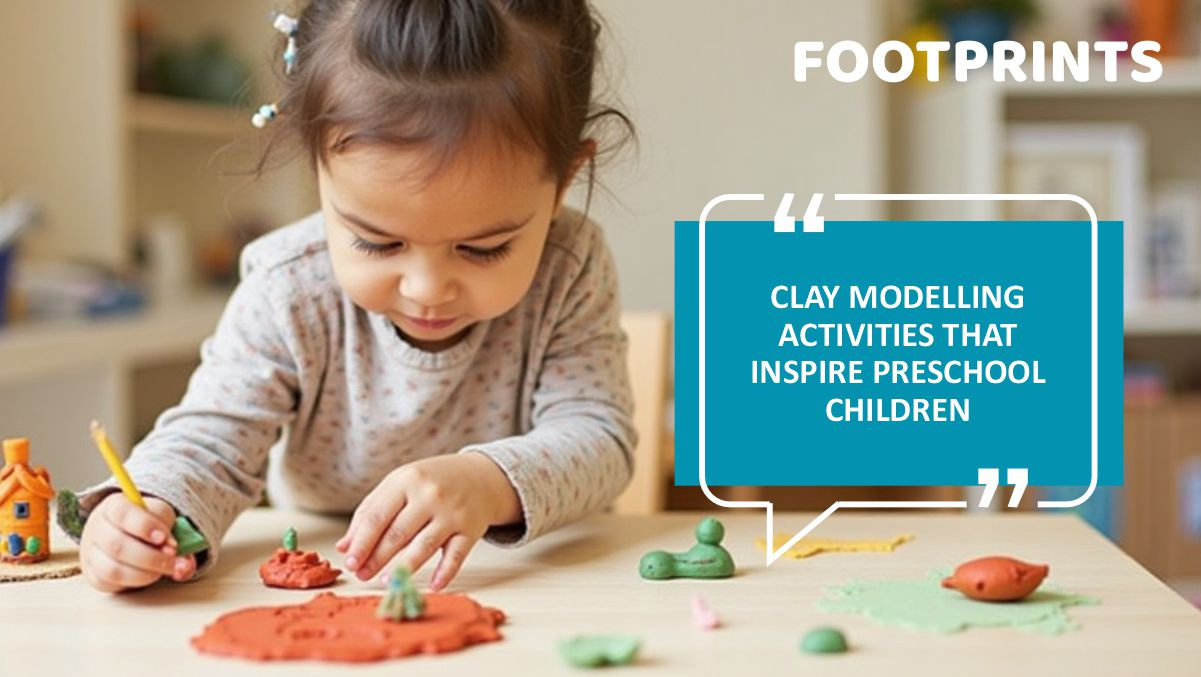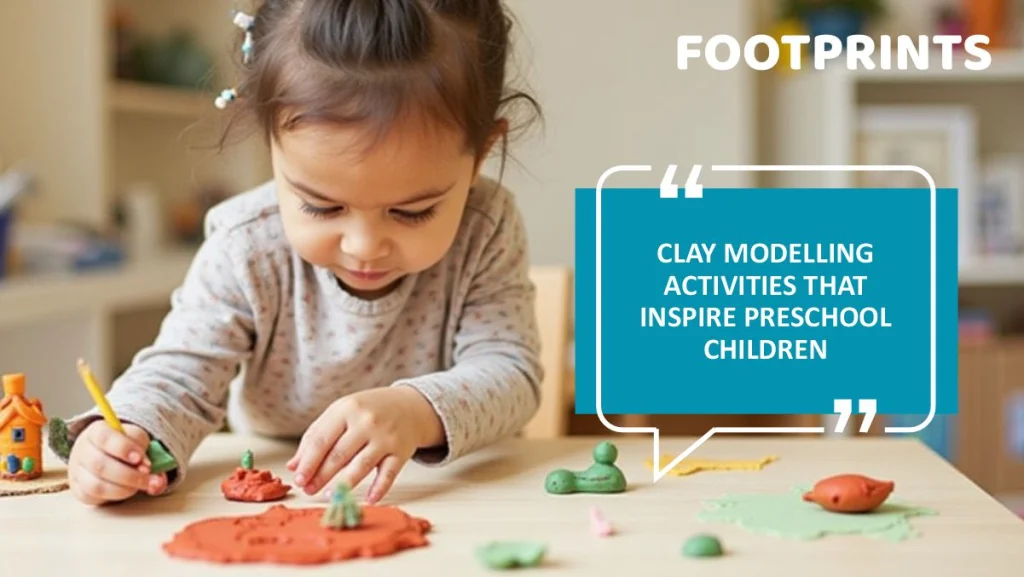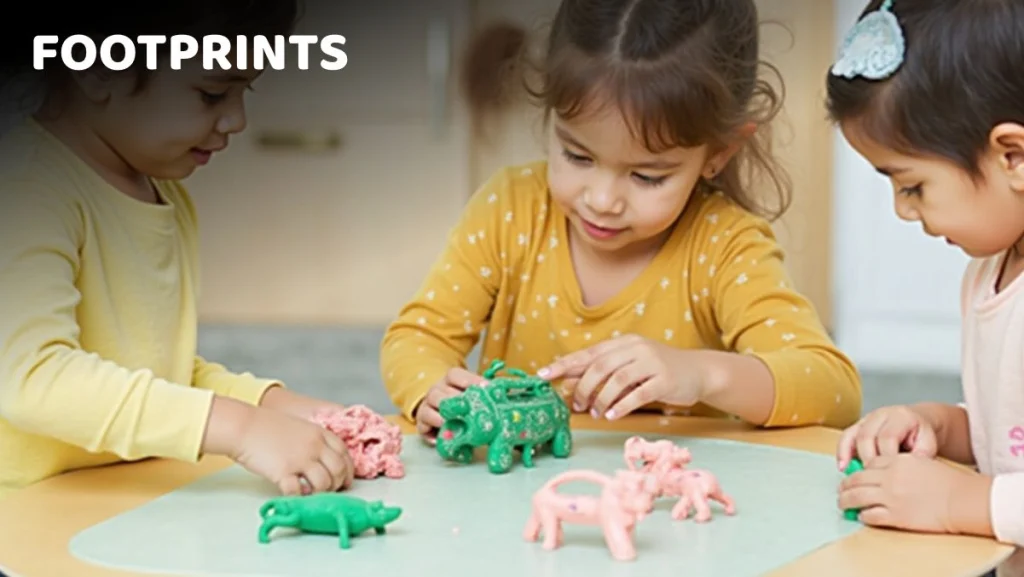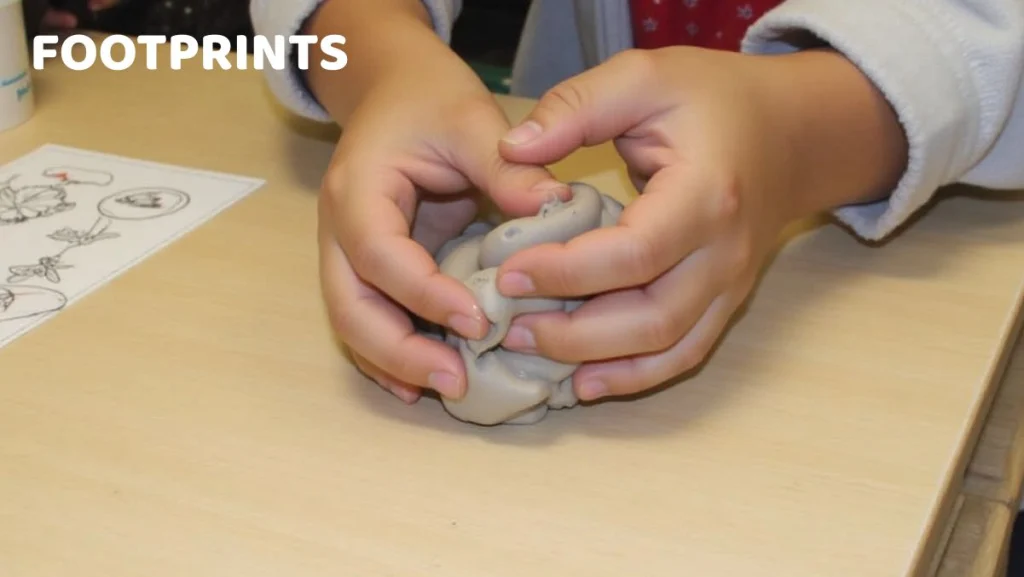

Creative play is at the core of early childhood education, and for decades, one of the favourite activities which still captures young imagination is clay modelling. This flexible, interesting activity, which is fun, also develops important skills in a growing child. Let’s look at what clay activity has to offer in early learning. We will cover what clay modelling is and present you with new ideas which take this traditional craft out of the ordinary. From a simple afternoon activity to a full-scale clay modelling competition, we see how these activities fuel imagination, fine motor skill development, and also bring lots of joy.
What Is Clay Modelling?
At its base, clay modelling activity is a type of sculpting which includes the use of pliable materials like play-dough, air-dry clay, or modelling clay. We shape, press, roll, pinch and construct forms with our hands.
For Pre-School Children:
Fun with clay provides a sensory-rich experience. It presents basic art and design concepts in a playful and tactile way. Educators at Footprints Playschool use clay for a multi-sensory approach, which includes physical, emotional, and cognitive growth.
Why is clay modelling important in early childhood development?
Many parents and educators point forward that playing with clay is just a pastime.However, it has many effective elements that supports children’s growth and strengthen the foundational development.
Fine Motor Development
Squeezing and pinching of clay develops the small muscles in children’s hands,which is a base for writing, putting on clothes, and self-care.
Imaginative Play
Clay art can be easily transformed into storytelling form by creating various shapes of an elephant, a pizza, even a spaceship!
Emotional Expression
Children in the act of playing with clay tend to express their feelings and thoughts without words.
Clay Work Outlets Today. To present to you a variety of options which put a twist on the classic clay play, here is a list of Activities which are creative and developmentally valuable.
1. Create Your Zoo: Have children dress up as their favourite animals. Use elements such as toothpicks and plastic forks for texture. This is for learning animal names, out of which you also get to know their habitats and do lots of imaginative role play.
2. Clay Food Cart: Let children create pretend food, ice cream cones, pizzas, or fruit. A pair in which children play chefs or customers.
3. Brick Letters and Numbers: Form letters and numbers out of clay snakes, and support early literacy of numeracy.
4. Construct a Town: By modelling houses and cars, in trees and benches, children can create a miniature town.
• Encourages teamwork and spatial awareness.
5. Clay Features: Create your own self-portraits or clay modelling images, which also include emotional faces (happy, sad, angry).
• Helps with emotional identification – At Footprints Playschool, we include these types of activities in our story and music sessions which in turn increases engagement.

Organising a Clay Modelling Competition
A clay modelling competition is a great way to structure, play, motivate and bring in the community.
• Choose age-appropriate themes: Animal World, Nature, My Dream Toy.
Set a time frame of 20 to 30 minutes. Let each child put forth their work to improve speaking.
Assessment criteria:
• Creativity and originality
• Effort and attention to detail
• Explanation/storytelling about the model
Competitions need not be for victory. Issue out certificates to all and clay-based badges to raise confidence.
Clay Modelling Images as Learning Tools
In your classroom or at home, try out clay modelling:
• Inspire new creations
• Teach vocabulary and concepts
• Help children learn by observing
Create a display of clay animals, fruit, shapes and also other children’s work prints. This is a resource and inspiration for new projects. Also present short video tutorials which demonstrate new techniques such as rolling, scoring, or blending clay.
FAQs
What is clay modelling for children?
Clay modelling is an art form which involves moulding soft, pliable clay into the shapes of animals, food, and characters. Also, it helps to develop a child’s creativity, hand strength, and fine motor skills.
What role does a clay activity play in preschool?
Clay modelling is great for sensory exploration, hand coordination and emotional expression. A fun and educational tool which is also used in preschool. What do we see in children when they play with clay? They learn:
• Motor control
• Patience and focus
• Shape and size recognition
• Social interaction (in group settings)
What do you have for clay modelling competition ideas?
Themes like:
• My Favourite Animal
• Underwater World
• Fantasy Creatures
Stimulate storytelling, creativity, and confidence in young children.
Going Beyond Basic Clay Play
To increase the value of what your students learn from clay, include in your curriculum larger thematic units: Art and Expression
Create holiday-themed items (snowmen, flowers, Diwali diyas). Pair for mixed media exploration, which includes paint and collage.
Literacy Through Clay
• Create clay characters from storybooks
• Reinforce storytelling and character recognition
Clay and Math
• Model shapes (circle, square, triangle)
Counting, sequencing, and symmetry. Science Meets Clay
Create clay animals and talk about their habitats. Model out food chains or life cycles. These groups present a multi-dimensional approach, which in turn increases the value of clay modelling in early education.

Safety and Success in Clay Modelling
Choose Safe Materials: Pick safe materials:
• Non-toxic, child-safe clay
• Avoid items with choking hazards
Build out a Clay Station
• Aprons, mats, and easy-to-clean surfaces
Include items such as rolling pins, cookie cutters and stencils.
Supervise but Don’t Interfere: Let children play freely. Don’t jump in to “fix” what they are creating, they are learning through that process. Children playing with clay is a multifaceted development tool.
Summary
Clay Play for Great Results. Clay modelling is a do-it-all art form. It improves fine motor skills and also enhances storytelling and problem-solving abilities. Also, it is a great source of endless learning.
Key Takeaways
Integrate clay play into early development programs. Use structured and open-ended clay modelling activities. Celebrate creativity in a clay modelling competition.
Conclusion
Fuel Young Creativity with Clay. Whether as a teacher or a parent, you’ll see magic in how children play with clay; they are focused, joyful, and very much at play. Through hands-on modelling and shared tales, you are not just passing the time you are in fact forming young minds. Institutions that include Footprints Playschool see clay modelling as a much more in-depth experience that is not just play, but rather a core component of early childhood education. Also, get in on the action, roll up your sleeves and dive into the clay!
Usman is a seasoned Performance Marketing Professional and content writer with over 8 years of experience in the education industry. With a passion for driving results and creating compelling narratives, Usman specializes in crafting data-driven marketing strategies and insightful content that resonates with educational institutions and their audiences. His expertise in performance marketing, combined with his in-depth understanding of the education sector, allows him to bridge the gap between marketing initiatives and student engagement effectively. Whether through targeted campaigns or educational content, Usman helps brands enhance their online presence and achieve measurable growth.

